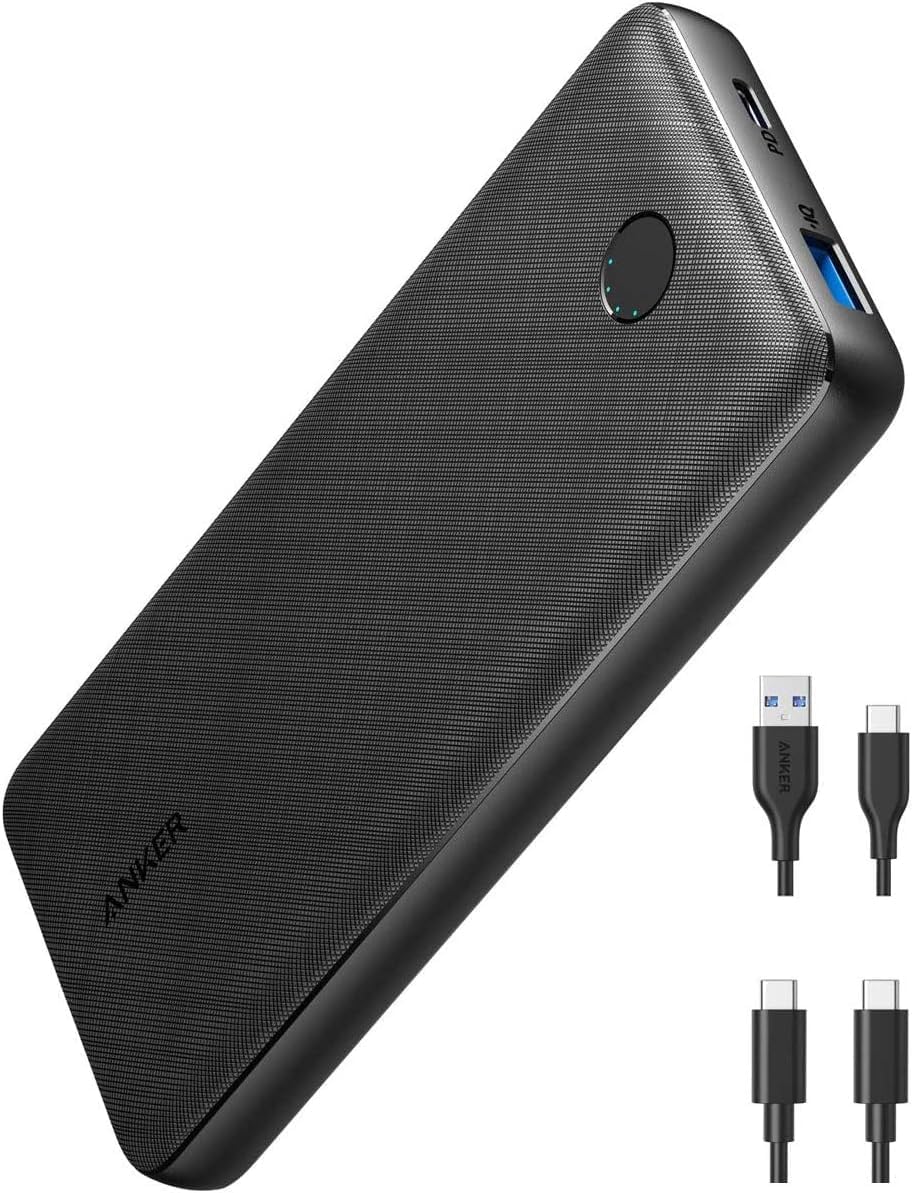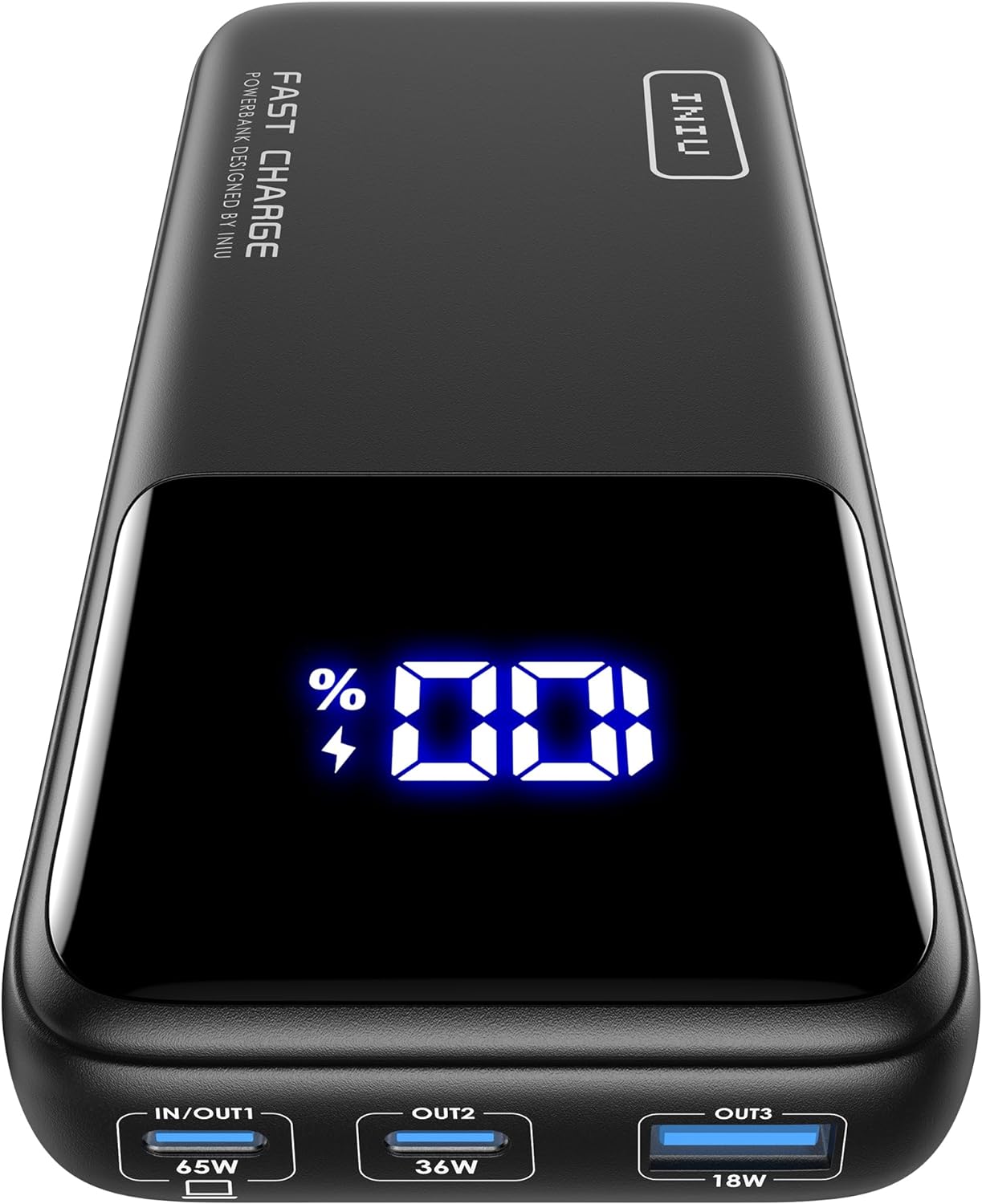The Fire on Air Busan Flight 391: A Wake-Up Call for Power Bank Safety
The Fire on Air Busan Flight 391: A Wake-Up Call for Power Bank Safety. Learn how to choose safe, high-capacity power banks for secure travel.
The Fire on Air Busan Flight 391
On January 28, 2025, a routine flight preparation at Gimhae International Airport in Busan, South Korea, turned into a dramatic emergency. Air Busan Flight BX391, an Airbus A321ceo bound for Hong Kong, caught fire while on the ground, leading to the rapid evacuation of all 176 passengers and crew. Preliminary findings point to a power bank stored in an overhead luggage compartment as the culprit. Thankfully, only minor injuries were reported. The Fire on Air Busan Flight 391 has spurred a reevaluation of lithium-ion battery rules across Asia’s aviation industry. For details, see Reuters’ coverage.
The Hidden Danger: Power Bank Safety
The Fire on Air Busan Flight 391: A Wake-Up Call for Power Bank Safety underscores the risks of lithium-ion batteries in power banks. These efficient batteries can trigger thermal runaway, a chain reaction of overheating causing flammable gas venting, smoke, or explosion. Triggers include physical damage (dropping, crushing, puncturing), overcharging, manufacturing defects, extreme temperatures, or non-compliant chargers. The power bank’s brand wasn’t identified due to severe damage, highlighting that any damaged or low-quality device poses a risk. Always inspect power banks for swelling, heat, or unusual smells, and avoid uncertified products to prevent such incidents.
Certifications: Your First Line of Defense
To mitigate risks exposed by The Fire on Air Busan Flight 391, prioritize power banks with safety certifications. These ensure rigorous testing for safety and reliability. Key certifications include:
- UL 2056: Tests for overcharge protection, short-circuit prevention, and thermal stability.
- CE: Ensures compliance with EU health, safety, and environmental standards.
- FCC: Prevents electromagnetic interference in the U.S.
- RoHS: Restricts hazardous materials in electronics.
- UN38.3: Ensures batteries are safe for air transport, critical post-Air Busan.
Sweeping Changes: Asian Airline Rules
The Fire on Air Busan Flight 391 prompted Asian airlines to tighten power bank policies, effective March 1, 2025, with others following by April 1. Power banks and e-cigarettes are banned from overhead bins, requiring storage in seat pockets or under seats for quick access. Onboard charging is prohibited to prevent overheating. Passengers may need transparent plastic bags, protective pouches, or taped terminals to avoid short circuits. Capacity limits (100Wh without approval, 101-160Wh with approval, max five per passenger) are strictly enforced. Airlines like Korean Air, Asiana, Singapore Airlines, Scoot, Malaysia Airlines, Cathay Pacific, Thai Airways, China Airlines, and Hong Kong Airlines have adopted these rules. Check your carrier’s policies.
Reputable Brands for Safe Power Banks
Choosing a power bank from a trusted brand minimizes risks highlighted by The Fire on Air Busan Flight 391: A Wake-Up Call for Power Bank Safety. Anker leads with robust build quality, PowerIQ, and GaN technology in its PowerCore and Prime series. UGREEN offers high-wattage USB-C PD options at competitive prices. INIU provides affordable, high-capacity models, while Omnicharge caters to professionals with AC outlets. Belkin delivers reliable, well-designed power banks, and Baseus is known for innovative, high-wattage solutions. These brands invest in quality control and certifications, ensuring safer lithium-ion batteries.
Protecting Your Investment and Safety
Responsible usage is crucial to avoid incidents like The Fire on Air Busan Flight 391. Handle power banks carefully to prevent drops, crushing, or excessive force. Store them in cool, dry places, away from direct sunlight or extreme temperatures. Use original or certified cables matching the power bank’s wattage. Avoid overcharging by disconnecting when fully charged, despite built-in protections. Monitor for swelling, excessive heat, unusual smells, or physical damage, and dispose of faulty units safely per local regulations. These steps ensure safe use of power banks during travel.
Our Top 3 Safe Power Banks
These high-capacity power banks from trusted brands ensure safety and performance, certified to prevent risks like those seen in The Fire on Air Busan Flight 391.
Anker PowerCore 20K PD

The Anker PowerCore 20K PD is a reliable power bank, ideal post-The Fire on Air Busan Flight 391: A Wake-Up Call for Power Bank Safety. Its 20,000mAh (74Wh) capacity, airline-friendly, charges MacBooks, Chromebooks, or phones efficiently. The 65W USB-C PD output ensures fast charging, with PowerIQ optimizing performance. Dual USB-C and USB-A ports support multi-device charging. Certified with UL and UN38.3, it’s a safe, compact choice for travelers.
Key Features:
- 20,000mAh capacity for laptops and devices.
- 65W USB-C PD for fast charging.
- Dual USB-C and USB-A ports.
- UL and UN38.3 safety certifications.
- Compact, travel-friendly design.
INIU MegaPower 20000mAh

The INIU MegaPower 20000mAh is a budget-friendly power bank, addressing concerns from The Fire on Air Busan Flight 391. Its 20,000mAh (74Wh) capacity powers Windows laptops, Chromebooks, or tablets, with 65W USB-C PD for rapid charging. Multiple ports (USB-C, USB-A) enable simultaneous charging. Certified with CE and UN38.3, it includes overcharge protection, ideal for students or commuters.
Key Features:
- 20,000mAh capacity for versatile charging.
- 65W USB-C PD for fast charging.
- Multiple ports for multi-device use.
- CE and UN38.3 safety certifications.
- Affordable, durable design.
UGREEN Nexode 20000mAh

The UGREEN Nexode 20000mAh is a powerful power bank, designed with safety in mind after The Fire on Air Busan Flight 391. Its 20,000mAh (74Wh) capacity supports MacBooks, laptops, or phones, with 100W USB-C PD for fast charging. Multiple USB-C and USB-A ports allow simultaneous charging. Certified with UL, CE, and UN38.3, it’s perfect for professionals needing a travel-safe option.
Key Features:
- 20,000mAh capacity for high-performance devices.
- 100W USB-C PD for rapid charging.
- Multiple USB-C and USB-A ports.
- UL, CE, and UN38.3 safety certifications.
- Compact, sturdy build.
Compare These 3 Safe Power Banks
These high-capacity laptop power banks are chosen for their safety certifications and ability to charge laptops securely, preventing risks like those in The Fire on Air Busan Flight 391. (Word count: 31)
| Power Bank | Capacity | Wattage | Ports | Weight |
|---|---|---|---|---|
| Anker PowerCore 20K PD | 20,000mAh | 65W PD | 2x USB-C, USB-A | ~345g |
| INIU MegaPower 20000mAh | 20,000mAh | 65W PD | USB-C, USB-A | ~360g |
| UGREEN Nexode 20000mAh | 20,000mAh | 100W PD | 2x USB-C, USB-A | ~400g |
Frequently Asked Questions About Power Bank Safety
- Why did a power bank cause The Fire on Air Busan Flight 391?
- Preliminary findings suggest a power bank’s battery insulation failed, causing a thermal runaway, likely due to physical damage or a defect. The brand wasn’t identified due to damage.
- What certifications ensure a power bank is safe?
- UL 2056, CE, FCC, RoHS, and UN38.3 certifications ensure testing for overcharge protection, short-circuit prevention, thermal stability, and safe air transport.
- Can I take a power bank on a plane after The Fire on Air Busan Flight 391?
- Yes, in carry-on luggage up to 100Wh, but not in overhead bins. Many airlines ban onboard charging and require protective storage; check specific policies.
- How can I prevent power bank fires?
- Use certified power banks, avoid physical damage, use compliant cables, store in cool conditions, and discontinue use if swollen or overheating.
- Which brands make safe power banks?
- Anker, UGREEN, INIU, Omnicharge, Belkin, and Baseus are trusted for quality control, safety certifications, and reliable performance.
- How do I safely dispose of a damaged power bank after The Fire on Air Busan Flight 391?
- Take damaged power banks to certified recycling centers or electronics disposal facilities. Do not throw them in regular trash, as lithium-ion batteries can ignite. Check local regulations or contact manufacturers like Anker for disposal programs.
- Are power banks with built-in fire suppression systems available in 2025?
- In 2025, some brands are developing power banks with thermal-resistant casings and auto-shutoff sensors, but true fire suppression systems are rare. Look for models with UN38.3 and advanced safety circuits from reputable brands.
Summary: Travel Safely with Certified Power Banks
The Fire on Air Busan Flight 391: A Wake-Up Call for Power Bank Safety highlights the dangers of lithium-ion power banks if not chosen or handled carefully. Certified power banks from Anker, INIU, and UGREEN, like the PowerCore 20K PD, MegaPower 20000mAh, and Nexode 20000mAh, offer 65W-100W USB-C PD and airline-compliant capacities. New Asian airline rules ban overhead storage and charging. By choosing certified power banks, you can charge devices securely in 2025.
Explore Our Full Range of Power Banks
Looking for portable charging solutions beyond high-capacity models? Discover a wide variety of power banks and portable chargers with different features, capacities, and brands to find the perfect fit for all your charging needs on powerstationhq.com.
Find More Power Banks